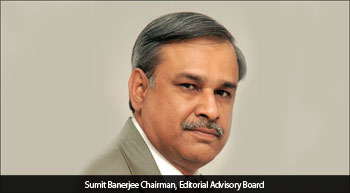The whole thing started out on the basic premise of corruption and black money. Now, the crusade against black money has morphed into a rather arcane campaign for promoting a cashless economy. Why this midcourse change of the primary objective of such a nationwide project like demonetisation?
Now, as we go to press, out of Rs 14 or 15 lakh crore of demonetised currency notes, upwards of Rs 13 lakh crore, have been already safely deposited into banks, purportedly as white money, and it is likely that bulk of the remaining notes will also come into the banks, all as white money, by the 30th December deadline. If that were to happen, one can well judge the efficacy of this drive, at least on the count of removing black money, which happened to be the original raison d’Otre of this exercise, and the logic for all the secrecy, all of which seem to have miserably failed. Perhaps, therein lies the motivation to find a new, longer term goal for demonetisation, as we shift from black cash to cashless.
The subject matter of a cashless economy is fascinating, and almost always invokes a debate on digital infrastructure which enables cashless transactions. In our annual issue, as we celebrate the growth of our country’s interconnected infrastructure, it will be quite pertinent to talk about the width and depth of our digital network. There seems to be two major concerns expressed by experts regarding our digital transaction pathways ù those of quality and safety, and both are equally important.
In the context of digital payments, quality means consistent connectivity and speed of data transfer, which, in turn, is a function of bandwidth. We, the city dwellers, can at least express our opinion on the quality of our network infrastructure, but what about the rural areas and remote regions? When it’s a question of reach, issues of speed do not even come up. Among the top world economies, India is the lowest in terms of Internet penetration at 19 per cent. In terms of banking reach and financial inclusion, although large strides have been made through the Jan Dhan Scheme, there is still 60 per cent of our adult citizens who do not have bank accounts. In fact, India is home to about 20 per cent of the world’s unbanked adults. Talking about safety, which really means data security and privacy in our context, recently, we heard the Qualcomm CEO lament the absence of a hardware layer of security encryption in the E-Wallet applications in India, and we haven’t heard a rebuttal from anyone. Breach of privacy and theft of identity data are not governed by stringent laws in our legal framework, and our cyber security laws are inadequate.
Recently, the passwords of 2.5 million debit card holders of SBI were hacked and stolen. According to the ‘State of the Internet’ report by Akamai Technologies, and Kaspersky Lab, India has the highest incidence of ransomware attacks, and is among the top five nations where the Web applications are attacked the most. Clearly, there’s a case for a step-change in strengthening our data security, before we can push our unsuspecting and less educated (and therefore, more vulnerable) poor citizens into cashless transactions.
In the meantime, we have transgressed from black cash to cashless to ôless cashö in the space of the last few weeks, with remarkable speed. Hope we move as fast on Net infrastructure and cyber security.



Leave a Reply
You must be logged in to post a comment.